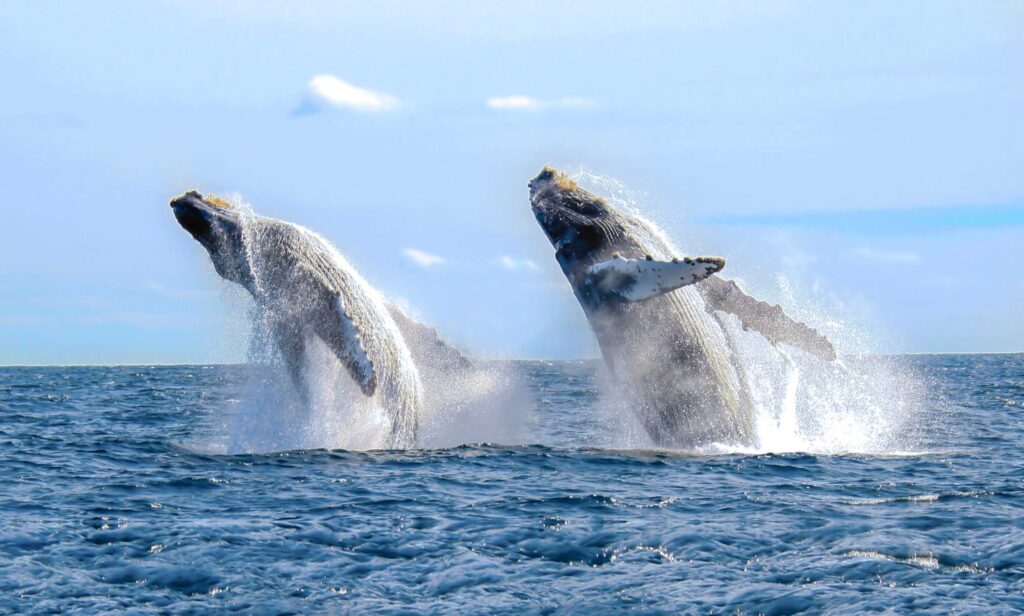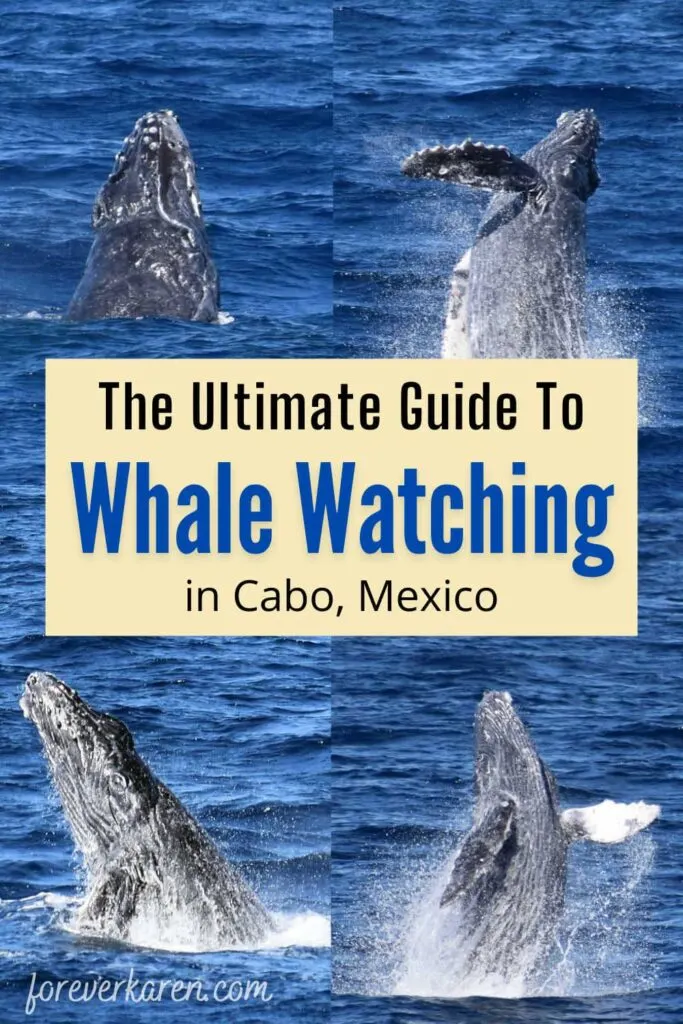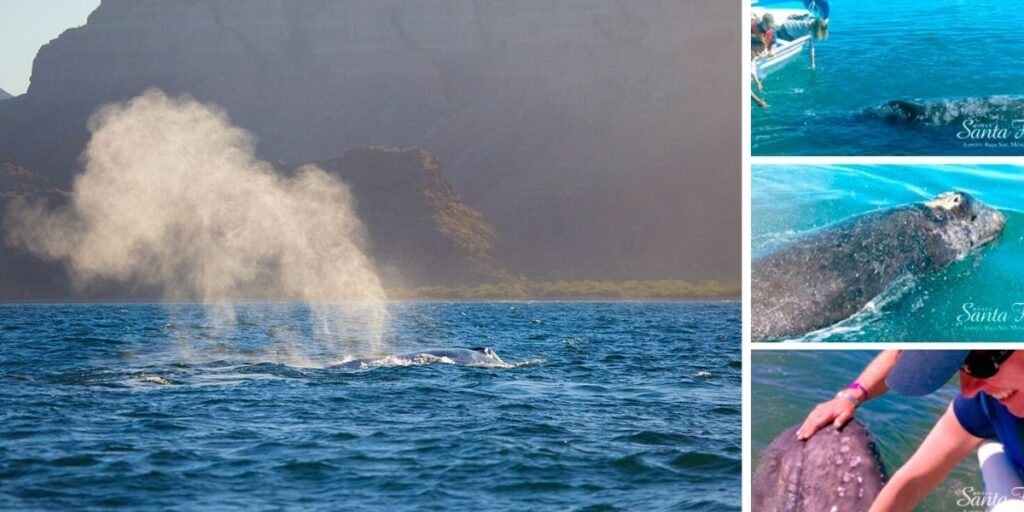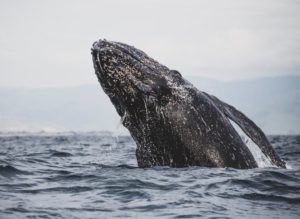So you’ve always been intrigued by the beauty and magnificence of whales, and you’re itching to witness these majestic creatures up close. Well, Mexico is the perfect destination for your next adventure! In this essential guide, we’ll take you on a journey to some of the best spots in Mexico for whale watching and help you understand the ideal time of year to catch these incredible marine giants in action. Get ready to be mesmerized by the wonders of whale watching in Mexico!

When to Go Whale Watching in Mexico
If you’re planning a whale watching trip to Mexico, timing is everything. The whale watching season in Mexico varies depending on the specific whale species you hope to see. Overall, the best time to go whale watching in Mexico is between December and April. During these months, you can witness the incredible migration of several whale species along the coast of Mexico.
Best months to see different whale species
Different whale species can be spotted in Mexico at different times of the year. For example, if you’re eager to glimpse the majestic Gray Whales, plan your visit between January and March. This is when they migrate from the Arctic to the warm waters of Baja California. Humpback Whales, on the other hand, can be seen from December to April, especially in areas like Puerto Vallarta and Cabo San Lucas.
If you’re hoping to catch a glimpse of the largest animal on Earth, the Blue Whale, plan your trip between December and April. These gentle giants can be spotted in the regions of Loreto and La Paz during their migration. Additionally, you might have the chance to witness the impressive hunting techniques of Orcas, also known as killer whales, which are seen between December and April.
For those interested in encountering Sperm Whales, the best time to visit is between January and March. These magnificent creatures can often be found in the Sea of Cortez, near the city of La Paz. Pilot Whales and Bryde’s Whales are also known to make appearances in the waters surrounding Mexico, with sightings scattered throughout the year.
Weather conditions for whale watching
In addition to considering the whale watching season, it’s essential to take the weather conditions into account when planning your trip. Generally, the weather in Mexico is pleasant and mild during the whale watching season. However, it’s always a good idea to check the local weather forecast before embarking on your adventure.
The Pacific coast tends to have cooler temperatures, especially during the early mornings and evenings, so it’s advisable to dress in layers to ensure your comfort. The Gulf of California and the Caribbean coast, on the other hand, have warmer climates, perfect for soaking up some sun while whale watching. It’s important to pack sunscreen, hats, and sunglasses to protect yourself from the sun’s rays and stay hydrated throughout the day.
Where to Go Whale Watching in Mexico
Mexico is home to several popular whale watching destinations, which offer incredible opportunities to observe these magnificent creatures up close. Whether you prefer the Pacific coast, the Gulf of California, or the Caribbean coast, there are plenty of options to choose from.
Puerto Vallarta is one of the most popular whale watching destinations in Mexico. Located on the Pacific coast, it offers breathtaking views and encounters with Humpback Whales during their migration. Another renowned destination is Cabo San Lucas, which not only boasts beautiful landscapes but also provides opportunities to spot Humpback Whales and other marine wildlife.
If you prefer a more tranquil setting, consider visiting the regions of Loreto and La Paz in Baja California Sur. Here, you can witness the annual migration of Blue Whales, as well as encounter playful dolphins and sea turtles. The calm waters of these areas create the perfect conditions for a peaceful and memorable whale watching experience.

Specific areas within each destination to spot whales
Within each whale watching destination, there are specific areas known for their high concentration of whale sightings. In Puerto Vallarta, for example, you’ll want to head to Banderas Bay. This bay serves as a haven for Humpback Whales during their breeding and calving season, providing excellent viewing opportunities.
In Cabo San Lucas, the waters around the famous landmark, El Arco, are often teeming with whales. This iconic rock formation offers a picturesque backdrop for your whale watching expedition. For those visiting Loreto and La Paz, the Sea of Cortez is the place to be. This UNESCO World Heritage Site is known as the “Aquarium of the World” and is home to an array of marine life, including Blue Whales.
Boat tours and charters for whale watching
To fully immerse yourself in the whale watching experience, consider booking a boat tour or charter in Mexico. These tours are led by experienced guides who can take you to the best spots for whale sightings while providing valuable information about the different species you encounter.
In Puerto Vallarta and Cabo San Lucas, numerous companies offer whale watching tours, ranging from small boats to larger vessels. Choose a reputable operator that prioritizes responsible whale watching practices and respects the natural habitat of these incredible creatures.
When visiting Loreto and La Paz, you can join a boat tour led by knowledgeable guides who are passionate about marine conservation. These tours often include opportunities to snorkel or dive in the Sea of Cortez, allowing you to discover the underwater wonders in conjunction with your whale watching adventure.

Types of Whales to Look Out For
Mexico is a treasure trove of whale species, each with its own unique characteristics and behaviors. Let’s explore some of the most common whales you have the chance to encounter during your trip.
Gray Whales
Gray Whales are undoubtedly one of the main attractions for whale watchers in Mexico. These gentle giants migrate from their feeding grounds in the Arctic to the breeding and calving areas in Baja California. Gray Whales are known for their friendly and curious nature, often approaching boats to interact with the passengers. Witnessing these magnificent creatures up close is an unforgettable experience.
Humpback Whales
Humpback Whales are another species regularly spotted in Mexican waters. Known for their acrobatic displays and haunting songs, Humpback Whales captivate the hearts of all who encounter them. These whales migrate to Mexico’s warm waters to breed and give birth, creating the perfect opportunity for unforgettable whale watching experiences.
Blue Whales
The Blue Whale, the largest animal on Earth, can be seen during its migration through the Mexican waters. These giants of the sea are renowned for their size and beauty. Despite their massive proportions, Blue Whales are peaceful and majestic creatures, making any sighting an awe-inspiring moment.
Orcas
Orcas, also known as killer whales, are a sight to behold. These intelligent and social creatures are known for their distinctive black and white markings. Orcas can be spotted in the waters of Mexico during their migration, displaying their remarkable hunting techniques and close-knit family dynamics.
Sperm Whales
Sperm Whales, with their iconic large heads and prominent blowholes, can often be seen in Mexico’s Sea of Cortez. These whales have a unique diving behavior, staying submerged for long periods in search of food. Observing their impressive dives and witnessing a Sperm Whale breach the surface is a breathtaking experience.
Pilot Whales
Pilot Whales, with their sleek bodies and prominent dorsal fins, are a lesser-known but equally fascinating whale species. Although sightings of Pilot Whales in Mexico are less frequent, they still provide an incredible opportunity for whale enthusiasts to observe and learn more about these mysterious creatures.
Bryde’s Whales
Bryde’s Whales are known for their slender bodies and streamlined shape. Despite their relatively small size compared to other whale species, encounters with Bryde’s Whales are still a remarkable experience. Their playful behavior and graceful movements make them a joy to watch.
Responsible Whale Watching Practices
While whale watching offers a unique and captivating experience, it’s crucial to prioritize responsible and respectful practices towards these amazing creatures. By following a set of guidelines, we can help preserve their natural habitat and minimize disturbance to their daily lives.
Importance of responsible whale watching
Responsible whale watching is essential for the well-being and conservation of whale populations. By approaching these magnificent animals with respect and adhering to specific guidelines, we can minimize stress and potential harm caused by our presence. Responsible whale watching allows us to observe these creatures in their natural environment without disturbing their natural behaviors.
Guidelines for respectful whale watching
When participating in whale watching activities, it’s crucial to follow a set of guidelines to ensure the safety and welfare of both humans and whales. These guidelines may include maintaining a safe distance from the animals, avoiding sudden movements or loud noises, and refraining from touching or feeding the whales. By respecting these guidelines, you can contribute to the long-term conservation of these incredible creatures.
Understanding whale behavior and signs of stress
To further support responsible whale watching, it’s important to familiarize yourself with whale behavior and signs of stress. Whales may exhibit behaviors such as breaching, spy-hopping, or fluking, all of which provide valuable insights into their natural lives. It’s essential to interpret these behaviors correctly and avoid approaching if the whales show signs of stress, such as erratic movements or avoiding contact.
Eco-friendly whale watching operators
Choosing an eco-friendly whale watching operator is crucial in ensuring responsible practices are upheld. Look for tour operators that have a strong commitment to marine conservation and prioritize the welfare of the animals. These operators often have naturalists or marine biologists on board to provide educational insights and share their knowledge about whales and their habitats.

Preparing for a Whale Watching Trip
To make the most of your whale watching trip in Mexico, proper preparation is key. Here are some essential tips to help you plan ahead and have a memorable experience.
Booking a whale watching tour
Research and book your whale watching tour in advance to secure your spot and ensure availability. Look for reputable tour operators that are known for their knowledgeable guides and responsible practices. Consider reading reviews and testimonials from previous participants to get an idea of the quality of the tour.
What to pack for a whale watching trip
When packing for your whale watching adventure, consider bringing essential items such as sunscreen, a hat, sunglasses, and a light jacket, depending on the weather conditions in your chosen destination. Don’t forget to bring a camera or binoculars to capture those incredible moments on the water. It’s also a good idea to pack some snacks and plenty of water to stay hydrated throughout the trip.
Safety considerations and precautions
While whale watching is generally a safe activity, it’s essential to prioritize your safety and the safety of the animals. Follow the instructions and guidelines provided by your tour operator and stay within designated areas or distances recommended to avoid any unnecessary risks. Always listen to the crew’s instructions and avoid leaning over the boat or making sudden movements that could cause accidents.
Best camera and equipment for capturing whale encounters
If you want to document your whale watching experience, consider investing in a camera with a good zoom lens. This will allow you to capture clear pictures and videos of these majestic creatures from a distance. Additionally, consider bringing a tripod or image stabilization equipment to ensure steady shots in the often choppy waters. Don’t forget extra memory cards and batteries to capture every unforgettable moment.
Popular Whale Watching Festivals and Events
Whale watching in Mexico isn’t just limited to traditional tours. Several annual festivals and events celebrate the migration of these magnificent creatures, providing unique opportunities to immerse yourself in the whale watching culture. These events offer a chance to learn more about whales, engage in educational activities, and participate in conservation efforts.
Annual festivals and events celebrating whale migration
One of the most prominent whale watching festivals in Mexico is the Vallarta Whale Festival in Puerto Vallarta. This week-long event takes place in late February and features educational workshops, art exhibitions, and live music performances. It aims to raise awareness about marine conservation and supports local initiatives to protect the whale populations in the region.
Another noteworthy event is the Festival de la Ballena in Los Cabos, which celebrates the arrival of Gray Whales. This festival includes whale watching tours, concerts, culinary events, and educational activities for all ages. It provides a unique opportunity to experience the magic of whale watching while embracing the local culture and traditions.
Highlights of each festival
At the Vallarta Whale Festival, visitors can enjoy various activities such as guided whale watching tours, eco-tours, and workshops on marine conservation. Attendees can also appreciate an artisan market showcasing local craftsmanship and taste traditional Mexican cuisine. The festival’s highlight is the grand Parade of Whales, which brings together locals, tourists, and organizations to celebrate and support whale conservation efforts.
The Festival de la Ballena in Los Cabos offers an unforgettable experience for participants. Besides the whale watching tours, visitors can engage in educational activities and workshops to learn more about the Gray Whales’ behavior and conservation. At night, live music performances and cultural displays take place, creating a festive and vibrant atmosphere unique to the region.
Activities and attractions beyond whale watching
Whale watching festivals provide an opportunity to explore the surrounding attractions and experiences beyond the main events. In Puerto Vallarta, take advantage of the vibrant nightlife, stunning beaches, and delicious cuisine. In Cabo San Lucas, explore the iconic El Arco rock formation, indulge in water sports, or simply relax on the pristine beaches. These festivals offer the perfect balance of educational experiences and leisure activities for a well-rounded and memorable trip.

Whale Watching Tips and Tricks
To maximize your chances of spotting whales during your trip to Mexico, follow these tips and tricks that will make your whale watching adventure even more rewarding.
How to increase your chances of spotting whales
Arriving early in the morning for your whale watching tour can greatly increase your chances of spotting whales. Whales are more active and visible during the early hours, making it the optimal time for sightings. Additionally, pay attention to the guidance provided by your knowledgeable guides, as they are experienced in locating the best spots and knowing the whales’ behaviors.
Spotting and identifying different types of whale behaviors
To fully appreciate and understand the whales’ behaviors, it’s helpful to familiarize yourself with some common behaviors they exhibit. Breaching, when a whale propels itself out of the water and crashes back, is one of the most breathtaking sights. Spy-hopping is when a whale rises vertically out of the water to observe its surroundings. Fluking refers to the whale lifting its tail out of the water before diving deep. By observing and identifying these behaviors, you can enrich your whale watching experience.
Photography tips for capturing the perfect shot
Capturing stunning photographs of the whales you encounter requires skill and preparation. First and foremost, study your camera’s settings and practice capturing fast-moving subjects in advance. Set your camera to a fast shutter speed to freeze the whales’ movements. Keep your camera in continuous shooting mode to capture multiple frames in quick succession. Lastly, be patient and ready to capture the perfect shot when the moment arises.
Etiquette for interacting with other whale watchers
When participating in whale watching tours, it’s important to respect the rules regulating interaction with other participants. Remember to be considerate and avoid obstructing others’ views. Share the space onboard and be mindful of your movements to ensure everyone has an equal opportunity to observe the whales. By practicing proper etiquette, you contribute to a positive and enjoyable experience for everyone.
Marine Conservation and Research Efforts
Whale conservation and research are vital for the protection of these magnificent creatures and the ecosystems they inhabit. Mexico actively engages in various initiatives and projects aimed at preserving whale populations and contributing to scientific knowledge.
Conservation initiatives to protect whales in Mexico
Mexico has implemented several conservation initiatives to protect whales and their habitats. One of the most notable is the creation of marine protected areas along the coast. These areas provide a safe haven for whales and other marine life, promoting their reproduction, feeding, and migration.
Additionally, Mexico has implemented regulations and guidelines for responsible whale watching, ensuring that tour operators adhere to sustainable practices. These regulations focus on maintaining a safe distance from the whales, limiting the number of boats in certain areas, and promoting education about the importance of conservation.
Research projects and studies on whale populations
Mexico actively supports research projects and studies focused on understanding whale populations and their behaviors. Researchers and marine biologists collaborate with local universities, organizations, and international institutions to gather data on migration patterns, feeding habits, and breeding behaviors. This knowledge is crucial for making informed decisions regarding conservation efforts and ensuring the long-term survival of these magnificent creatures.
Volunteering opportunities in whale conservation and research
If you’re passionate about marine conservation and want to get involved, there are volunteering opportunities available in whale conservation and research. Many organizations offer volunteer programs where you can contribute to scientific studies, assist in data collection, or participate in educational outreach programs. These opportunities allow you to make a tangible difference in the conservation efforts and gain a deeper understanding of whale behavior and habitat preservation.
Other Marine Wildlife to Discover
While whale watching is undoubtedly a highlight of any trip to Mexico, there is a wealth of other marine wildlife waiting to be discovered. Take the opportunity to explore the diverse ecosystems and encounter these fascinating creatures in their natural habitats.
Dolphin encounters
Mexico is home to various dolphin species, offering unique opportunities for dolphin encounters. Consider booking a separate dolphin-watching tour or participating in a swim-with-dolphins program to experience the playfulness and intelligence of these incredible creatures up close.
Sea turtle nesting and conservation
Mexico is renowned for its sea turtle nesting sites, making it a paradise for turtle enthusiasts. Depending on the time of year, you may witness the nesting or hatching process of endangered species such as the Olive Ridley or the Loggerhead turtle. Participate in turtle conservation programs or visit dedicated sanctuaries to learn more about the importance of protecting these fascinating creatures.
Shark sightings
For those with a love for adventure, Mexico offers opportunities to spot various shark species. From the iconic Great White Sharks of Guadalupe Island to the magnificent Whale Sharks found in the waters near Isla Mujeres, encountering these apex predators will undoubtedly leave you in awe.
Bird watching opportunities
Mexico’s coastal regions are also havens for bird enthusiasts. Take a break from whale watching and explore the local bird populations. Witness the majesty of sea eagles, herons, and pelicans soaring through the sky or appreciate the vibrant colors of tropical birds hiding within the lush vegetation.
Whale Watching as Ecotourism
Whale watching in Mexico not only allows you to witness incredible natural wonders but also contributes to local communities and conservation efforts. This sustainable form of tourism, known as ecotourism, provides numerous benefits while ensuring the longevity of whale populations.
Positive impacts of whale watching on local communities
Whale watching tourism generates economic opportunities for local communities, stimulating growth in the tourism industry and creating jobs. It encourages investment in infrastructure and services, benefiting local businesses such as accommodations, restaurants, and transportation providers. This influx of visitors also fosters cultural exchange, as tourists connect with local populations and gain a deeper appreciation for Mexico’s rich heritage.
Supporting local economies through responsible tourism
By participating in responsible whale watching activities, you directly support local economies in coastal communities. Choosing reputable tour operators ensures that your money is invested back into the local community, contributing to the overall well-being and development of the region. Additionally, some tour operators actively engage in community projects and social initiatives, further enhancing the positive impact of your visit.
Ensuring sustainable practices in the whale watching industry
Sustainable practices in the whale watching industry are essential to preserve the well-being of the whales and their habitats. By selecting responsible tour operators, you contribute to the industry’s commitment to minimizing negative impacts. Responsible operators prioritize the safety and comfort of the whales while providing educational and enlightening experiences for visitors. They actively participate in conservation initiatives, contribute to research efforts, and promote awareness about the importance of protecting these magnificent creatures.
Whale watching in Mexico is an opportunity to connect with nature, witness incredible spectacles, and contribute to the protection of these extraordinary marine creatures. By following responsible practices, respecting their natural habitat, and choosing sustainable tourism options, you can ensure that future generations will have the privilege of experiencing the magic of whale watching. So pack your bags, embark on a journey of discovery, and create memories that will last a lifetime.
